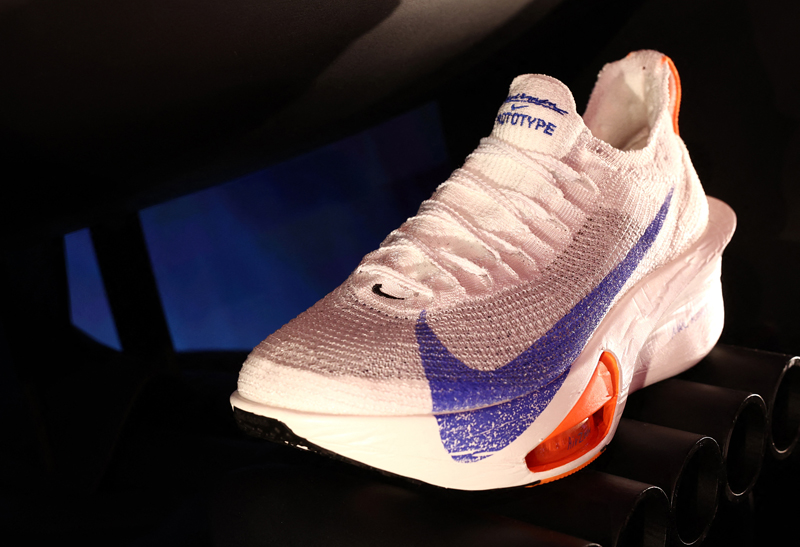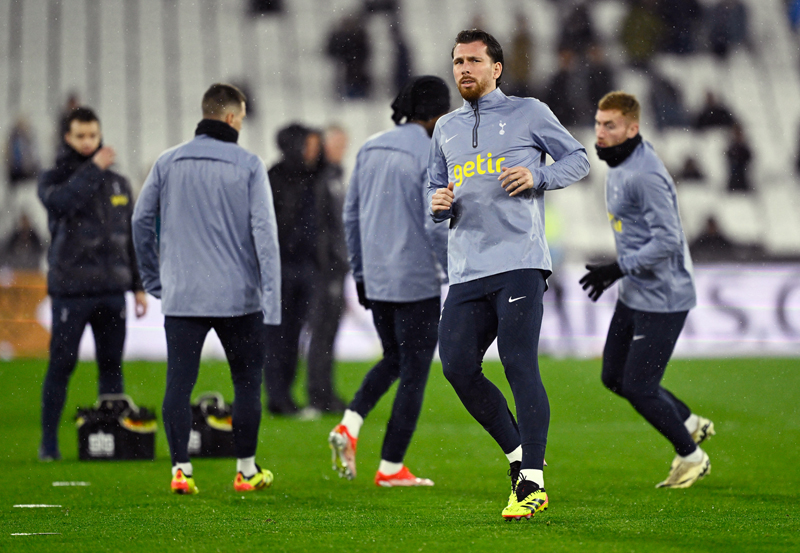When it comes to high-performance cycling, aerodynamic innovation is paramount. In the first of two articles, Joe Beer explains the role of wind tunnel testing to improve bike aerodynamics and how it can be used to improve cycling performance
As early as the 1880s, cyclists sought a high-altitude track, known as a velodrome, in order to ride a greater distance during record attempts. This was possible because of the lower density of air reducing wind resistance acting on the rider. However, despite the adoption of the drop handlebar bike and riding in protective ‘groups’ or peletons in the early part of the 20th century nothing much changed until the 1970s. It was then that the legendary Eddy Merckx visited a wind tunnel prior to his 1972 ‘hour’ record in order to hone his bike and riding position.
However, it took the Renault-Gitane team and a host of aerodynamic innovations in the late 1970s and early 1980s to put wind tunnel testing into the ‘must-have’ toolbox of pro teams and Olympians seeking maximum speed. Francesco Moser famously used two disc wheels, a special skinsuit and up-turned handlebars to break Merckx's record, causing a rulebook change and transforming the sport. The floodgates opened at the 1984 Los Angeles Olympics, fuelled by huge American investment in aerodynamics, which became the driving force behind all aspects of bike technology. Today, all contemporary pro teams and countries with performance programmes include wind tunnel testing.
Mere mortals
For mere untrained mortals, provided the wind conditions are calm, it is relatively easy to pedal at say 10mph and for the rider to maintain a comfortable upright position. Excluding the effects of hills (where gravity comes into play) there are two forces resisting the rider’s forward motion; the main force is wind resistance and there’s also the lesser force of rolling resistance.However, as the rider increases speed to competitive efforts the wind resistance increases dramatically. At 20mph for example, 80% of your effort goes into fighting wind resistance. This resistive force is a product of the impeded airflow produced both by the rider and the bike. There are other forces, resisting progress, principally drive train friction, but this is low and often ignored due to its lack of significance.
A simple example of how wind resistance affects a rider (and hence the best position to adopt on a bike) can be best illustrated by comparing a commuter in an upright position to a fully crouched racing position. At 22mph, the upright commuter would require over 340 watts of power output to maintain this speed whereas the crouched racing cyclist would require just 170 watts!(1).
When you consider that the world hour record (set by Chris Boardman, who covered 56.375km) required over 400 watts, while the average club cyclist does not even produce 300 watts for a 10-mile race, you can see that 340 watts is a considerable effort. This explains why upright cyclists don’t travel to the shops at over 20mph and why competitive racers crouch to reduce drag and maximise speed. Figure 1 shows the power in watts required to overcome air drag at 22mph for different bikes and riding positions (2).
If you check out the images of the successful Olympic cyclists from the recent Beijing games, whether from road race, time trial or track events, it’s clear that one factor is consistent across all the disciplines; aerodynamics counts when speed is high. Exactly where this low-speed/high-speed division actually occurs is academic – if you want to be faster against the clock you are fighting wind resistance and aerodynamic drag is your enemy.
Man and machine
In cycling, man and machine are a partnership that works together to attain a goal. The bike can be altered to change the rider’s position; similarly the rider’s goal will govern the choice of machine. For example, on the indoor track or velodrome, single speed geared ‘fixed wheel’ (no ability to ‘freewheel’) machines with no brakes are used. However, in road race and time trial events, multiple geared machines with the ability to brake are chosen. The bare bike (without rider) contributes around a third to a quarter of the drag a rider has to overcome. Yes, it’s significant, but the rider is the still the biggest object to hit the air (the focus of the next article in this series).A bike is comprised of the frame and forks, wheels, drive train and other components such as brakes, handlebars, water bottles. Importantly, unlike a car that has a shell covering most of its parts, a bicycle has many components that interact with airflow producing a complicated and as yet still not fully understood series of perturbations.
One example of this is the front brake, which can affect the air colliding with the head tube, the seat tube, seat stays and rear brake. It’s a messy interaction, which is only simplified if a full fairing covers the bike. A fairing is a full or partial covering for a bike, which both reduces aerodynamic drag and protects the rider from the elements. Fairings are more commonly used on recumbent bikes, where the rider is reclined into a near horizontal position. However, such designs are banned in normal cycle racing, triathlons and track racing. (If you’re interested in the politics affecting the technology adopted in cycling, read up on Oscar Egg’s 1932 Velocar, the UCI ban on fairings and Graeme Obree’s innovations that changed the rulebook.)
So what could changing you equipment do for your speed? Well, during recent trips to the wind tunnel and with the help of Formula One aerodynamicist Simon Smart (the man behind the Team Columbia Giant prototype bike seen in action at the 2008 Tour de France and Olympics), various riders and machine were tested to see their varying contribution to rider effort when riding at 25mph. Table 1 shows data which compared varying frame-fork combinations excluding the drag on the wheels. The data shows that ‘old-school’ round-tube frames compare less favourably to modern aerodynamically shaped carbon framesets.
Round cylindrical shapes, such as frame tubes, spokes and forks create drag as airflow separates in the downwind side of the cylinder. Take a wing-like shape, such as a shaped frame tube, spoke or rim and this produces less separation and turbulence, resulting in a smoother flow. The upshot is less drag holding back the bike and the rider’s forward progress.
Road bikes may have started with round tubes for strength and low cost but flared carbon frames are now used by many road racers, time triallists and track cyclists. There are limitations set down by the governing body (UCI) that affect professional cycling; however, triathletes, time triallists and fitness riders can buy speed via no holds-barred bike aerodynamics.
Hypothetical data from mathematical calculations by ‘aero gurus’ Jim Martin and John Cobb suggest that an aerodynamically shaped frame can save 1.5 to 2.5 minutes over 40kms compared to a standard round-tube frame (3). The bottom line is that the biggest part of the bike – the frame – can be used to make the rider faster. Tubes that are profiled into wing-like shapes, rear wheels shielded by flaring shapes and smooth lines throughout the modern aero frames all provide benefits.
No head-to-head data on frame and fork combinations, and for that matter most other items, exist for presentation here. All manufacturers test other company’s frames and know each other’s data but getting anyone to commit to providing exact numbers is impossible because trade secrets are just that in the world of wind tunnel testing. For example, it’s common to see manipulated images of rider drag figures, blurred images of equipment being tested or a total press ban from testing of an athlete or a new product!
Wheels and forks
Because the fork that attaches to the front wheel is right at the front of the bike (a so-called ‘leading edge’) it is thought by some to be in ‘clean air’. However, the front wheel actually throws up disturbed air, so it’s not a clear-cut interaction, though big round fork tubes are a definite no-no. Manufacturers have attempted to smooth this dirty air by including slots in the fork. Of note, Oval Concepts sold the patent to this slotted-technology to Ridley and this aerodynamic gizmo was included in the 2008 Tour de France runner-up Cadel Evans’s time trial bike. That said, experts don’t all agree if it actually makes any significant difference or not.Independent testing by BikeTechReview.com found fork choice and front wheel type interact to produce variations of one second per mile from worst to best-case scenario (4). It’s an interaction yet to be fully understood; some combinations of forks and wheels lose half a second per mile, yet to the naked eye they look similarly aerodynamic. This is where wind tunnel testing is invaluable as it reveals more than the human eye can ever visualise.
Previous data presented in PP 234 gave examples of wheels and the gains that deep-rimmed aerodynamic wheels have over standard box-shaped rims (see figure 2 below). By keeping the wind attached to the rim for longer the drag is reduced significantly. Keen watchers of the Tour de France, the Olympic road races and many stages races will see professional riders using deep rimmed wheel sets, which were until now used for just the time trial discipline.
Why are deep rims used more often now than in the past? Data presented by Zipp, a manufacturer of aerodynamic wheels and a big investor in wind tunnel testing, suggests they can offer one to one and three quarter minutes advantage over conventional box-shaped rims. When seconds count talking ‘minutes’ should get the competitive-minded rider to sit up and take notice. This advantage equates to saving the rider 15-30 watts, or 50-100 calories per hour of effort for the same speed, which is a very useful way to save energy in road races of three to six hours.My own testing and field testing with athletes suggests that at least two to three seconds per mile for the same power input by the rider can be gained with aerodynamic wheels. Other data suggest that aerodynamic wheels such as a rear disc and front three-spoke carbon wheel can make a rider 60-90 seconds faster over 40 kilometers(3). Again, in line with commercial data and my own, the result equates to 2.4-3.6 seconds per mile.
If you are vying for a personal best, are training correctly and considering an aerodynamic advantage, don’t ignore the rolling resistance of your wheels and tyres. This is often quoted as being 10% of work required or around 30 watts, but the power required to rotate just one tire at 25mph (40kmh) may vary from 12 to 22 watts, depending on brand, model and what inner tube or gluing methodology is used. Twenty watts more effort for the same speed seems small for an elite male athlete but this could be significant to a smaller female rider putting out 220 watts at maximum race effort. If the over-used moniker every second counts is your mission statement then be mindful that this comes from every watt that you can produce and every reduction in equipment drag you can buy.
Summary
In a wind tunnel with extremely high testing accuracy, you can reveal how the slightest change in equipment (or rider position) affects energy demand and performance. This gives the consumer, or professional athlete a good chance to make wise purchasing decisions to suit riding style/event based on the latest technological advances in equipment. However, before rushing out with your hard-earned cash, be sure to know what likely dividends you will gain. Don’t expect any element to do the work for you. You still need to be maximising your power and following an optimum pacing strategy to make the most of aerodynamics. No bike is fast; it’s the rider that makes it so!Joe Beer is a multisport coach (JBST.com), author of ‘Need to Know Triathlon’ (Harper Collins) and magazine columnist
References
1. Wilson (ed) (2004) Bicycling Science. MIT Press. 187-189
2. Ibid, p188
3. Martin, Cobb (2002) in High Performance Cycling. Human Kinetics. 120-123
4. BikeTechReview – Independent aerodynamic testing at MIT 2003










